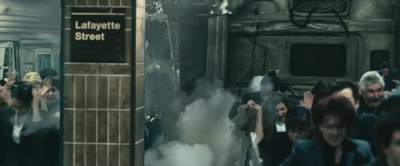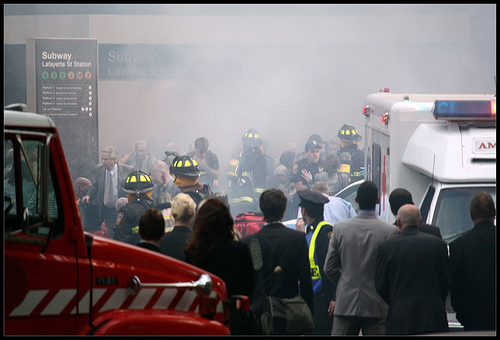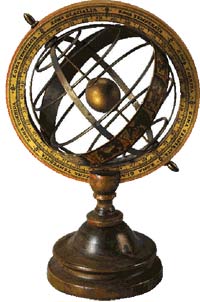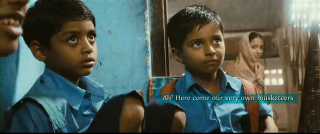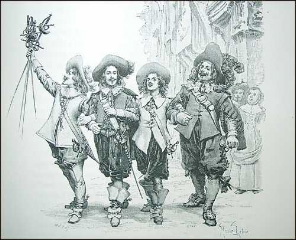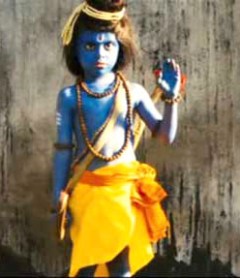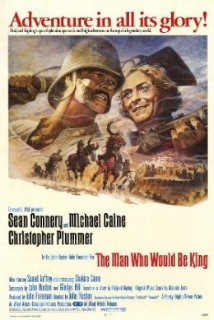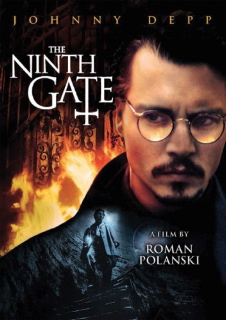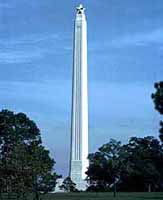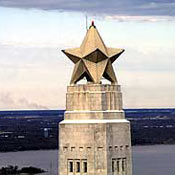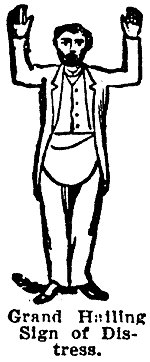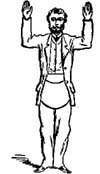Rogers "The Rajah" Hornsby, an original member of the Baseball Hall of Fame is listed on Masonic sites among the famous. The baseball stars are a who's who of famed Freemasons: Grover Alexander, Ty Cobb, Carl Hubbell, Branch Rickey, Honus Wagner, and Cy Young, to name a few. It is no mystery that some leaders of their time would be Masons. But what of the question, were the initial symbolic foundations of baseball Masonic?
I'm talking about baseball here because I am a guest on Tim Binnall's The 3rd Annual BoA: Audio Baseball Special for Sunday, April 5, 2009, on Binnall of America (also featuring Greg Bishop, Adam Gorightly, Richard Dolan, and Paul Kimball). For the broadcast, go to: BoA Audio Baseball Special.
Opening day for Major League Baseball will soon be upon us, although, with the international tournament catching on fire, the World Baseball Classic has created a new world order, so to speak.
One can keep score in a variety of ways.
I've looked at baseball clusters in "Suicide Squeeze" in one of my books. I'm not going to go there today. Another way to track baseball is through its mystic origins, Masonic and otherwise.

Todd Campbell at Through the Looking Glass referenced baseball’s beginnings being Masonic, and pointed out to me the following passage from Randy Lavello’s article:
Baseball was obviously created by Freemasons, as it bears the unmistakable marks of Freemasonry. The field, from home plate to the left and right field wall forms a compass; the entire outfield wall is the semicircle which this compass draws. Upside-down, overlapping this compass, the bases form the square. Thus, the baseball field is the emblem of Freemasonry. Three strikes and three outs were assigned because three is the principle sacred number of Freemasonry. Four is a number of significance because it represents a square (the shape) and deals with the four directions, thus: four balls, four bases. Nine is sacred because it is three squared… there are nine fielding positions and nine innings. This brings us to a total of twenty-seven outs per team a game…and guess what? Twenty-seven, along with eighty-one, are the only two sacred numbers greater than ten. Though eighty-one doesn’t occur in baseball, because of the presence of two nines (fielders and innings) it’s appropriate to mention the reason eighty-one is so revered: the multiples of nine, 9, 18, 27, 36, 45, 54, 63, 72, 81, and 90 form a mirror image between the numbers 45 and 54. Also, each one of these numbers equal nine when adding the two integers which comprise the number: 18- 1+8 = 9; 27- 2+7 =9; etc. Because of this, nine times nine was deemed a ‘high’ number. This further explains the near obsession with numbers surrounding baseball averages, home runs, ERA's, etc. It is truly a game for numerologists.
Abner Doubleday
Abner Doubleday (June 26, 1819 – January 26, 1893) is often, folklorically, said to be one of the two "Fathers" of American baseball. Allegedly Doubleday played the first game at Cooperstown, New York in 1839, and that's the reason the Baseball Hall of Fame is located there, so the story goes.
Doubleday was a career United States Army officer and Union general in the American Civil War. He fired the first shot in defense of Fort Sumter, the opening battle of the War Between The States. This happened on the northern 33rd degree of latitude, at Fort Sumter and is so noted in Masonic decipherings. Doubleday had a pivotal role in the early fighting at the Battle of Gettysburg, too, where he had his finest hour, but his relief by Major General George G. Meade caused lasting enmity between the two men.
In 1871, Doubleday commanded the 24th U.S. Infantry, an all African-American regiment, in Texas. He retired from the Army in 1873, and in San Francisco, after the war, he obtained a patent on the cable car railway that still runs there.
By 1878, he was living in Mendham, New Jersey, from where, that year, he became a prominent member of the Theosophical Society. When two of the founders of that society, Helena Blavatsky and Henry Steel Olcott, moved to India at the end of that year, he was constituted as the President of the American body.
In addition, he is known for a popular myth that he invented baseball, which has been debunked by almost all sports historians. The lore of baseball credits Doubleday with inventing the game, supposedly in Elihu Phinney's cow pasture in Cooperstown, New York, in 1839.
Joseph E. Chance writing biographically in the book, My Life In The Old Army by Abner Doubleday (New-York Historical Society, 1998), claims:
A letter from Albert Graves, a resident of Cooperstown, New York, and neighbor of Doubleday, is the only documentation remaining of Doubleday's connection to baseball. Graves asserted that Doubleday had taught the Cooperstown boys his modifications of a game known as "town ball." The changes to town ball included reducing the number of players, assigning each player a location in the field, and replacing the wooden posts designated as bases by flat stones....Sports writers, functioning in our new order of "political correctness" now claim that the first game of baseball played in Texas, supposedly at Galveston, was not organized by Doubleday while stationed there in 1867! Doubleday was indeed stationed in Galveston on this date, serving as colonel of the 17th Infantry, sent to impose military rule on a defeated nation.
The Mills Commission, chaired by Abraham G. Mills, the fourth president of the National League, was appointed in 1905 to determine the origin of baseball. The committee's final report, on December 30, 1907, stated, in part, that "the first scheme for playing baseball, according to the best evidence obtainable to date, was devised by Abner Doubleday at Cooperstown, New York, in 1839."
Baseball historian George B. Kirsch has described the results of the Mills commission as a "myth." Moreover, Doubleday himself never made such a claim, but his biography notes this has to do with Doubleday's "Christian modesty."
Of course, it didn't help that only the testimony of Graves, who would have been five in 1839, is the sole proof of the Doubleday tale. It also doesn't assist the story that Graves' reliability as a witness was questioned as the years went by because he was later convicted of murdering his wife and spent his final days in an asylum for the criminally insane.

Was Abner Doubleday a Freemason? There seems little proof of that. Still, the synchromystic underpinnings of Abner Doubleday's life, from that first shot at Fort Sumter to the President of the Theosophical Society to his final resting place at Arlington National Cemetery with an obelisk as his tombstone (Plot: Section 1, Grave 61), should not be understated.
Alexander Cartwright, Jr.
Most baseball historians, however, note that the links between Alexander Joy Cartwright, Jr. and the origins of American baseball are much more secure. I also would say that there is no doubt as to Cartwright's heavy Masonic involvements.
Born in New York City on April 17, 1820, to Alexander Joy Cartwright Sr., a merchant sea captain, and his wife Esther Burlock Cartwright, Alex Jr. began his working life in 1836 as a clerk at the age of sixteen in Coit & Cochrane, a broker's office on Wall Street. Coit is an incredibly significant name in cryptopolitical history, from Wall Street to Skull & Bones to the firefighter's monument in San Francisco called Coit Tower. (I will have more to say about that name at another time.)
Intriguingly, Cartwright's involvement with baseball also directly overlaps with his involvement in firefighting in New York City, as well as later in his life.
Here is a passage from Mr. Baseball's look at this history:
Many of these ball-playing young men, including Cartwright, were also volunteer firemen. The first firehouse that Cartwright was associated with was Oceana Hose Company No. 36. Later, he joined Knickerbocker Engine Company No. 12, located at Pearl and Cherry Streets. It disbanded in 1843. Some speculate that the young ballplayers, possibly Cartwright himself, named their ball club after the engine company, apparently sometime between 1842 and 1845.
A huge fire in July 1845 destroyed the Union Bank where Cartwright was employed. Consequently, Alex went into the book-selling business with his brother Alfred on Wall Street. They did not give up on their ball playing, though. Meanwhile, the city was growing and changing all around them.
The Knickerbocker Base Ball Club ventured across the Hudson River by ferry to Hoboken, New Jersey. There they found a roomy spot called Elysian Fields. The team drew up a constitution and bylaws on September 23, 1845, and twenty rules in all were adopted. The Knickerbocker rules are also synonymously known as the “Cartwright Rules.” Cartwright and his friends played their first recorded game on October 6, 1845, and continued playing well into late autumn that year. Receipts exist for dinners that are dated December 5, 1845, and are labeled with "Elysian Fields Hoboken for twenty dinners at $1.50 each for the Knickerbocker Base Ball Club."
The first match game was played between the Knickerbockers and the New York Club on June 19, 1846, at Elysian Fields.
Cartwright followed the Gold Rush of 1848 to San Francisco when he moved his family there in March 1849, and then on to Hawaii in August 1849.
Knickerbockers
Interestingly, both Doubleday and Cartwright would turn up in San Francisco, historically. The link between New York and San Francisco can be shown easily, and one thread is the name Knickerbockers.
The term "Knickerbockers" began with Washington Irving's History of New York, (published 1809). Still further, the family name "Knickerbocker" can be traced to a single Dutch settler who immigrated to what is now New York in the late 1600s. By the late 19th century, the term had come to mean the style of breeches the settlers wore that buckled just below the knee, which became known as "knickerbockers," or "knickers."
The name "Knickerbocker" first acquired meaning with Washington Irving's History of New York, featured the fictional author Diedrich Knickerbocker, an old-fashioned Dutch New Yorker in Irving's satire of chatty and officious local history. In fact, Washington Irving had a real friend named Herman Knickerbocker, whose name he borrowed.
Herman Knickerbocker, in turn, was of the upstate Knickerbocker clan, which descended from a single immigrant ancestor, Harmen Jansen van Wijhe. Jansen van Wijhe invented the name upon arriving in New Amsterdam and signed a document with a variant of it in 1682. After Irving's History of New York, by 1831, "Knickerbocker" had become a local nickname for quaint Dutch-descended New Yorkers, with their old-fashioned ways and their long-stemmed pipes and knee-breeches long after the fashion had turned to trousers.
Thus the "New York Knickerbockers" were an amateur social and athletic club organized on Manhattan's (Lower) East Side in 1842, largely to play "base ball" according to written rules; on June 19, 1846 the New York Knickerbockers played the first game of "base ball" organized under those rules, in Hoboken, New Jersey, and were trounced 23 - 1.
Today, the name survives most overtly in the National Basketball Association team, the New York Knicks, short for Knickerbockers.
"Firebelle Lil" Coit, the benefactor of San Francisco's Coit Tower, gave the money for the structure in the name of that West Coast city's Knickerbocker Engine Co. 5, and also commissioned another neighborhood landmark, a statue of three firefighters on the southwest corner of Washington Square Park.
It seems clear that the "Knickerbocker" name in San Francisco has its roots in New York City, via the fire departments, specifically.
Elysian Fields
Cartwright's Knickerbockers had to play someplace, and intriguingly, the "base ball" team found a "roomy spot called Elysian Fields" in Hoboken, New Jersey.
Colonel Jacob Stevens, who would later helped found Stevens Institute of Technology (one of the top engineering institutions in the United States), owned an expanse known as the Elysian Fields. In about 1870, Stevens sold the Elysian Fields for a handsome profit, and today’s street grid was laid out, carving up the site. A small passive and children’s park bordered by Hudson Street, the right-of-way of 10th Street, and Frank Sinatra Drive bears the name “Elysian Park,” the last vestige of Col. Stevens’ Elysian Fields.
(The Stevens Institute of Technology is named after a family of accomplished inventors and engineers. In 1784, the land now occupied by Stevens Institute of Technology was purchased by John Stevens, who would later reverse engineer the British steam locomotive to American standards for domestic manufacture. Robert Stevens, one of John Stevens' sons is known for inventing the flanged T rail, a form of railroad rail in use today throughout the world. With his brother Edwin A. Stevens, Robert created America's first commercial railroad. When Edwin A. Stevens died in 1868, he left a bequest in his will as an endowment for the establishment of an "institution of learning", providing his trustees with land and funds.)
The intersection of 11th and Washington, where the Hoboken Industry and Business Association monument to baseball now stands, was converted into a full-fledged baseball tribute during the renovation of all of Washington Street in 2003. The intersection was repaved in brick, with the outline of a baseball clearly visible in the center and each of the four corners being designated as a “base” with the appropriate markings H, 1, 2, 3, according to Charles O’Reilly in 2005.
Needless to say, "Elysian Fields" carries a significant name.
The Elysian Fields, or the Elysian Plains, among the Greeks, was considered the final resting place of the souls of the heroic and the virtuous.
In Greek mythology, Elysium (Greek: Ἠλύσια πεδία) was a section of the Underworld (the spelling Elysium is a Latinization of the Greek word Elysion).
Elysium is an obscure and mysterious name that evolved from a designation of a place or person struck by lightning, enelysion, enelysios. This could be a reference to Zeus, the god of lightning, so "lightning-struck" could be saying that the person was blessed (struck) by Zeus (lightning).
Scholars have also suggested that Greek Elysion may instead derive from the Egyptian term ialu (older iaru), meaning "reeds," with specific reference to the "Reed fields" (Egyptian: sekhet iaru / ialu), a paradisaical land of plenty where the dead hoped to spend eternity.
Within twilight language decoding, it should be pointed out that William Grimstad and I have previously noted the importance of the hot name game among Fortean and anomalistic phenomena of "Reed"/"Reeder"/"Reeves" and, according to John A. Keel, in ufology and demonology, with "Reeves"/"Reaves." The name, of course, has been associated with the tragic lives of various "Reeves" who have played Superman on television and in the movies, and the Superman-like roles of Keanu Reeves in The Matrix and The Day The Earth Stood Still.
Several locations have taken on the name "Elysian Fields." They include, a spot near downtown Los Angeles, Elysian Park, which "is the city's oldest public park and, at 575-acres, the second largest after Griffith Park. It is home to numerous historic sites, including the Los Angeles Police Academy and Barlow Hospital, that are linked by miles of walking trails." The name is used for a remote section of wilderness in the northern region of Mt Rainier National Park in Washington State, and a frozen sea on Mars is called Elysium. There is a street named Elysian in New Orleans that is a setting and a symbolic element in A Streetcar Named Desire.
Today, Elysian Fields Quarterly - The Baseball Review is a popular magazine for the baseball diehard fan.
Back to Cartwright's Masonic Links
Mr. Baseball cements the Masonic nature of Cartwright's history with this paragraph:
Aside from his duties at the Honolulu Fire Department, Alexander became involved with many other aspects of the city through his involvement with Freemasonry. In 1859, for example, Queen Emma and King Kamehameha IV founded Queen's Hospital. As part of its customs and traditions, cornerstone ceremonies were held for the construction of new buildings. The first public Masonic ceremony on the islands was at the laying of the hospital cornerstone in 1860.
And further...
King Kamehameha V was the first native Hawaiian to become a Freemason. The February before he died, a cornerstone was laid in Masonic tradition with members of the lodge present, including the Acting Grand Master, Alexander Cartwright Jr. The king, together with Cartwright, spread cement beneath the Cornerstone for what would become the Judiciary Building.
The next monarch, King Kalakaua, became the first Hawaiian monarch to attend a baseball game. Cartwright was the king's financial advisor. The game took place in 1875 between the Athletes and the Pensacolas. Baseball had been growing in popularity since being played at Punahou School in the 1860s. But it is unclear whether Cartwright actually instituted the playing of the game on the islands.

At the Baseball Hall of Fame, there is a plaque upon which Cartwright is called the "Father of Modern Baseball." A large pink granite monument with suggestive symbols decorating it is to be found in Oahu Cemetery (formerly Nuuanu Valley Cemetery) in Honolulu, Hawaii. It marks Cartwright's final resting place. It has become an monument at which visitors routinely leave offerings, in the form of baseballs, bats, and baseball cards.
The name game kicks into high gear here, for Mr. Baseball writes:
Alexander Cartwright died on July 12, 1892, from blood poisoning from a boil on his neck. The Hawaiian monarchy was overthrown six months later on January 17, 1893. A group of Americans in Honolulu formed to request of President Benjamin Harrison that Hawaii be annexed to the United States. The president was in favor. The individual leading the cause for annexation was Lorrin Thurston. Coincidentally, Thurston had played baseball at Punahou School at the same time as Alexander III and Bruce Cartwright Sr.
Well, they (whomever they are) say there are no "coincidences," right? So July 12th is my birthday and "Lorrin" is merely another form of "Loren." I refuse to take this so personally. I won't dwell (this time) on the fact my ex-wife's family members (and thus my sons) are distantly related to the Coit family. Or that "Coit" is the middle name of my ex-father-in-law who worked on the infamous Eisenhower "vicuna coat affair" with Robert F. Kennedy, then died on RFK's birthday. Or that my own father was a career professional firefighter. Or how several generations of my family have been tied to baseball, in various ways. No, I won't take this personally. All news is local first, after all, right?
So, let's stop for now, and think about the future.
Here are my 2009 predictions for what the end of the MLB season will look like:
AL East Champs: NY Yankees
AL Central Champs: Minnesota Twins
AL West Champs: Anaheim Angels
AL Wildcard: Boston Red Sox
NL East Champs: NY Mets
NL Central Champs: Chicago Cubs
NL West Champs: LA Dodgers
NL Wildcard: Philadelphia Phillies
AL Champion: Boston Red Sox (over NY Yankees)
NL Champion: LA Dodgers (over Philadelphia Phillies)
World Series Champion: Boston Red Sox (with a few flakes of snow at the end of the game, no doubt)
Of course, my boyhood favorites, the St. Louis Cardinals (location of the highly symbolic Gateway Arch) could surprise everyone in the Central, but I'll stick with the above prophetic picks.
Other Masonic Baseball Imagery...
Play Ball!
Keep such research alive. Your assistance is greatly needed and appreciated. Please, today,...

